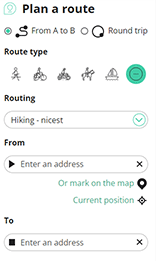Source: Jan Rymenams


To put it in context: northeast of Diest, at the 'Saspoort', there is an old weir structure known as the 'Great Buttress'. Just upstream of the Great Buttress, where the Zwarte Beek and the Demer come close together, is the overflow, the "Teerlings", which we have just passed. These constructions were part of the 19th-century defensive belt around Diest. Originally, they were used to supply the city ramparts with water and to be able to quickly flood the Webbekoms Broek in case of …Read more
Source: Jan Rymenams
 Azure
Azure![]() | | Public | Dutch
| | Public | Dutch

Select one of the most popular activities below or refine your search.
Discover the most beautiful and popular trails in the area, carefully bundled into appropriate selections.
Source: Jan Rymenams
Select one of the most popular categories below or be inspired by our selections.
Discover the most beautiful and popular attractions in the area, carefully bundled in appropriate selections.
Source: Jan Rymenams
With RouteYou, it's easy to create your own customised maps. Simply plot your route, add waypoints or nodes, add places of interest and places to eat and drink, and then easily share it with your family and friends.
Route planner

© 2006-2025 RouteYou - www.routeyou.com
Recent commentsShow all
No comments found.